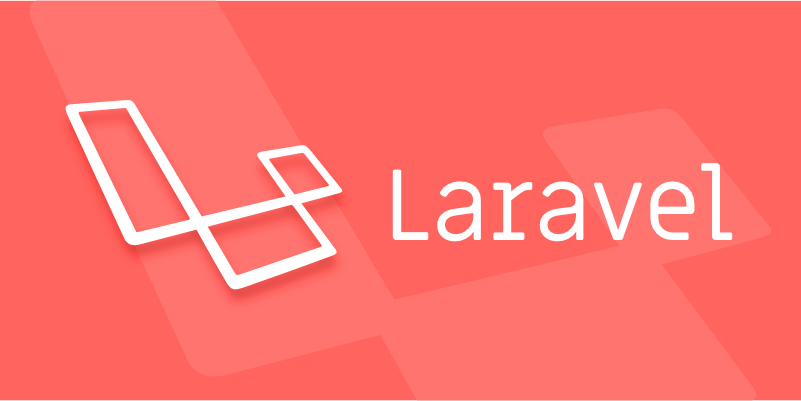Understanding the `public` directory in Laravel.
Jul 15, 2025 am 01:12 AMThe function of the public directory in Laravel is to store static resources that can be accessed directly by the browser. ① All publicly accessed images, CSS, and JS files should be placed in this directory. For example: /public/images/logo.png can be accessed through http://yourdomain.com/images/logo.png; ② Unlike the resources directory, the latter is used to store uncompiled front-end resources such as Blade templates, Sass files, etc.; ③ When configuring a web server, you need to point the root directory to public, such as Apache sets DocumentRoot to your-project/public; ④ Common problems include errors in the entry path, resulting in the class being not found or the static file failing to load. You should ensure that the server is configured correctly and the file location is correct. In summary, public is a directory that Laravel provides external access to static resources, and it is necessary to pay attention to security and correctly configure server pointing.

In the Laravel project, the public directory is the entrance to the website for external access. All files that can be accessed directly through the browser (such as images, CSS, JS files) should be placed here.

The best location for static resources
Laravel's design encourages developers to concentrate front-end static resources under public folders. for example:
- Image:
/public/images/logo.png - Stylesheet:
/public/css/app.css - Script file:
/public/js/main.js
The advantage of this is that the access path is simple and clear. For example, the above logo.png can be accessed directly through http://yourdomain.com/images/logo.png .

Note: Do not place sensitive files (such as configuration files, database backups) here, otherwise they may be accessed publicly.
The difference between resources directory
Many people tend to confuse the two directories of public and resources . Their main differences are their uses:

-
publicis for direct access by the browser and is suitable for static resources that have been compiled. -
resourcesare mainly used to store uncompiled front-end resources (such as Blade templates, Sass files, Vue components, etc.), and these contents will not be directly exposed to users.
For example: If you use Laravel Mix to compile front-end resources, you usually put the original code in resources/js and resources/sass , and then compile and output to public/js or public/css .
How to correctly use .htaccess or web server configuration
In order for Laravel to run properly, your web server should point to the public directory as the root directory. For example, in Apache, you need to set DocumentRoot to your-project/public .
If you are using a shared hosting, you may need to upload the entire Laravel project to the server, but make sure the entry is index.php in the public folder.
Frequently asked questions include:
- "Class 'Facades\..." not found when accessing: This may be because you pointed the entry to the project root directory instead of
public. - Unable to load CSS/JS file: Check whether the file is really placed under
publicand confirm that the URL path is correct.
Summarize
In general, the role of the public directory is very clear: it stores static resources that can be accessed directly. It's not as complicated as app or config , but it's critical in terms of deployment and security. As long as you pay attention not to place files randomly and configure the server pointing correctly, there will be no major problems.
The above is the detailed content of Understanding the `public` directory in Laravel.. For more information, please follow other related articles on the PHP Chinese website!

Hot AI Tools

Undress AI Tool
Undress images for free

Undresser.AI Undress
AI-powered app for creating realistic nude photos

AI Clothes Remover
Online AI tool for removing clothes from photos.

Clothoff.io
AI clothes remover

Video Face Swap
Swap faces in any video effortlessly with our completely free AI face swap tool!

Hot Article

Hot Tools

Notepad++7.3.1
Easy-to-use and free code editor

SublimeText3 Chinese version
Chinese version, very easy to use

Zend Studio 13.0.1
Powerful PHP integrated development environment

Dreamweaver CS6
Visual web development tools

SublimeText3 Mac version
God-level code editing software (SublimeText3)

Hot Topics
 How to create Laravel package (Package) development?
May 29, 2025 pm 09:12 PM
How to create Laravel package (Package) development?
May 29, 2025 pm 09:12 PM
The steps to create a package in Laravel include: 1) Understanding the advantages of packages, such as modularity and reuse; 2) following Laravel naming and structural specifications; 3) creating a service provider using artisan command; 4) publishing configuration files correctly; 5) managing version control and publishing to Packagist; 6) performing rigorous testing; 7) writing detailed documentation; 8) ensuring compatibility with different Laravel versions.
 What is Middleware in Laravel? How to use it?
May 29, 2025 pm 09:27 PM
What is Middleware in Laravel? How to use it?
May 29, 2025 pm 09:27 PM
Middleware is a filtering mechanism in Laravel that is used to intercept and process HTTP requests. Use steps: 1. Create middleware: Use the command "phpartisanmake:middlewareCheckRole". 2. Define processing logic: Write specific logic in the generated file. 3. Register middleware: Add middleware in Kernel.php. 4. Use middleware: Apply middleware in routing definition.
 Laravel Page Cache Policy
May 29, 2025 pm 09:15 PM
Laravel Page Cache Policy
May 29, 2025 pm 09:15 PM
Laravel's page caching strategy can significantly improve website performance. 1) Use cache helper functions to implement page caching, such as the Cache::remember method. 2) Select the appropriate cache backend, such as Redis. 3) Pay attention to data consistency issues, and you can use fine-grained caches or event listeners to clear the cache. 4) Further optimization is combined with routing cache, view cache and cache tags. By rationally applying these strategies, website performance can be effectively improved.
 Laravel MVC Architecture: what can go wrong?
Jun 05, 2025 am 12:05 AM
Laravel MVC Architecture: what can go wrong?
Jun 05, 2025 am 12:05 AM
Laravel'sMVCarchitecturecanfaceseveralissues:1)Fatcontrollerscanbeavoidedbydelegatinglogictoservices.2)Overloadedmodelsshouldfocusondataaccess.3)Viewsshouldremainsimple,avoidingPHPlogic.4)PerformanceissueslikeN 1queriescanbemitigatedwitheagerloading.
 How to populate test data using Seeder in Laravel?
May 29, 2025 pm 09:21 PM
How to populate test data using Seeder in Laravel?
May 29, 2025 pm 09:21 PM
Using Seeder to fill test data in Laravel is a very practical trick in the development process. Below I will explain in detail how to achieve this, and share some problems and solutions I encountered in actual projects. In Laravel, Seeder is a tool used to populate databases. It can help us quickly generate test data, which facilitates development and testing. Using Seeder not only saves time, but also ensures data consistency, which is especially important for team collaboration and automated testing. I remember that in a project, we needed to generate a large amount of product and user data for an e-commerce platform, and Seeder came in handy at that time. Let's see how to use it. First, make sure your Lara is
 What is Laravel Migrations? How to use it?
May 29, 2025 pm 09:24 PM
What is Laravel Migrations? How to use it?
May 29, 2025 pm 09:24 PM
Laravel's migration is a database version control tool that allows developers to programmatically define and manage database structure changes. 1. Create a migration file using the Artisan command. 2. The migration file contains up and down methods, which defines the creation/modification and rollback of database tables respectively. 3. Use the phpartisanmigrate command to execute the migration, and use phpartisanmigrate:rollback to rollback.
 Laravel: Simple MVC project for beginners
Jun 08, 2025 am 12:07 AM
Laravel: Simple MVC project for beginners
Jun 08, 2025 am 12:07 AM
Laravel is suitable for beginners to create MVC projects. 1) Install Laravel: Use composercreate-project--prefer-distlaravel/laravelyour-project-name command. 2) Create models, controllers and views: Define Post models, write PostController processing logic, create index and create views to display and add posts. 3) Set up routing: Configure/posts-related routes in routes/web.php. With these steps, you can build a simple blog application and master the basics of Laravel and MVC.
 What are policies in Laravel, and how are they used?
Jun 21, 2025 am 12:21 AM
What are policies in Laravel, and how are they used?
Jun 21, 2025 am 12:21 AM
InLaravel,policiesorganizeauthorizationlogicformodelactions.1.Policiesareclasseswithmethodslikeview,create,update,anddeletethatreturntrueorfalsebasedonuserpermissions.2.Toregisterapolicy,mapthemodeltoitspolicyinthe$policiesarrayofAuthServiceProvider.






